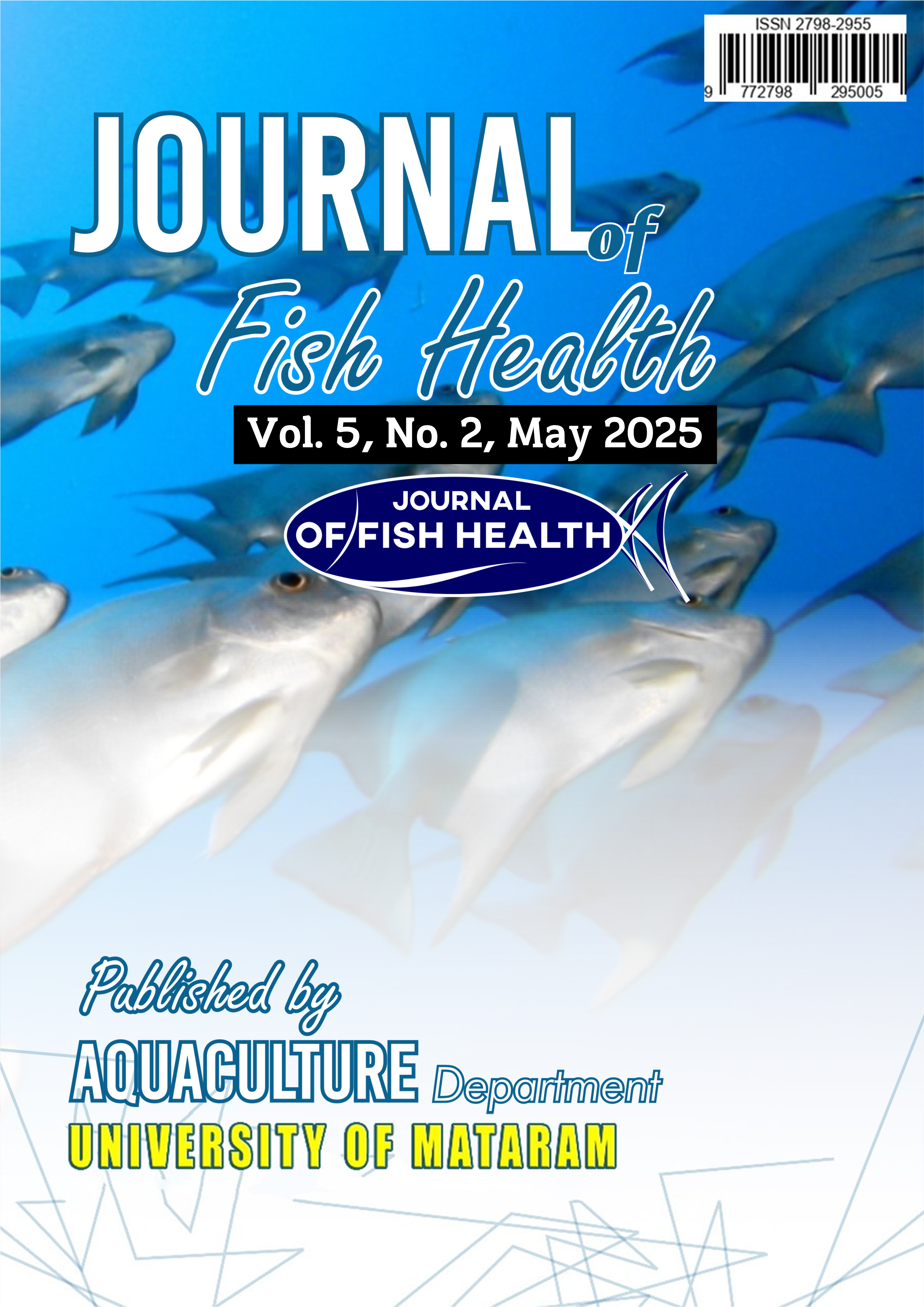Ichthyofauna Biodiversity in Lake Kelari Within the Muaro Jambi National Cultural Heritage Area as a Basis for Establishing a Lubuk Larangan
DOI:
https://doi.org/10.29303/jfh.v5i2.6451Keywords:
Biodiversity, Conservation, IUCN, KCBN, Lubuk LaranganAbstract
Lake Kelari is located in the Muaro Jambi National Cultural Heritage Area (KCBN) and has ecological and economic value as a habitat for various species of fish. This study aims to identify the biodiversity of the lake, conservation status, global distribution, and fish biodiversity index in the lake, which can be the scientific basis for the establishment of the proclamation pit as an in-situ conservation effort. The method used is a survey method including the collection of primary data through fishing using nets, bubu, and fishing rods in the 2023 rainy season and the 2024 dry season, as well as measuring water quality and habitat character. The results of the study show that the biodiversity of ikhtiofauna in Lake Kelari includes; 13 species, 13 genera and 7 families. The biodiversity index shows medium criteria. Lake Kelari has the potential as an insitu conservation area with the discovery of a species of senggiringan fish (Hemibagrus planicep) which has the status of Data Vulnerable in the IUCN Red List. Most of the species found are consumption fish, and some others are ornamental fish. The riparian vegetation found varied, the water quality was relatively maintained, and the absence of introduced fish showed the natural environment of Lake Kelari. In conclusion, Lake Kelari has medium fish biodiversity index with important conservation and economic value. The implementation of the ban can be a strategic step in maintaining fish populations and supporting the sustainability of the ecosystem and local economy.
Downloads
Published
Issue
Section
License
1. The copyright of this journal belongs to the Editorial Board, based on the author's consent, while the moral rights of the publication belong to the author(s).
2. The formal legal aspect of journal accessibility refers to the same Creative Common Attribution + Noncommercial + ShareAlike (CC BY-NC-SA), implying that publication can be used for non-commercial purposes in its original form.
3. Every publication (printed/electronic) is open access for educational, research and library purposes. In addition to the objectives stated above, the editorial board is not responsible for copyright infringement















